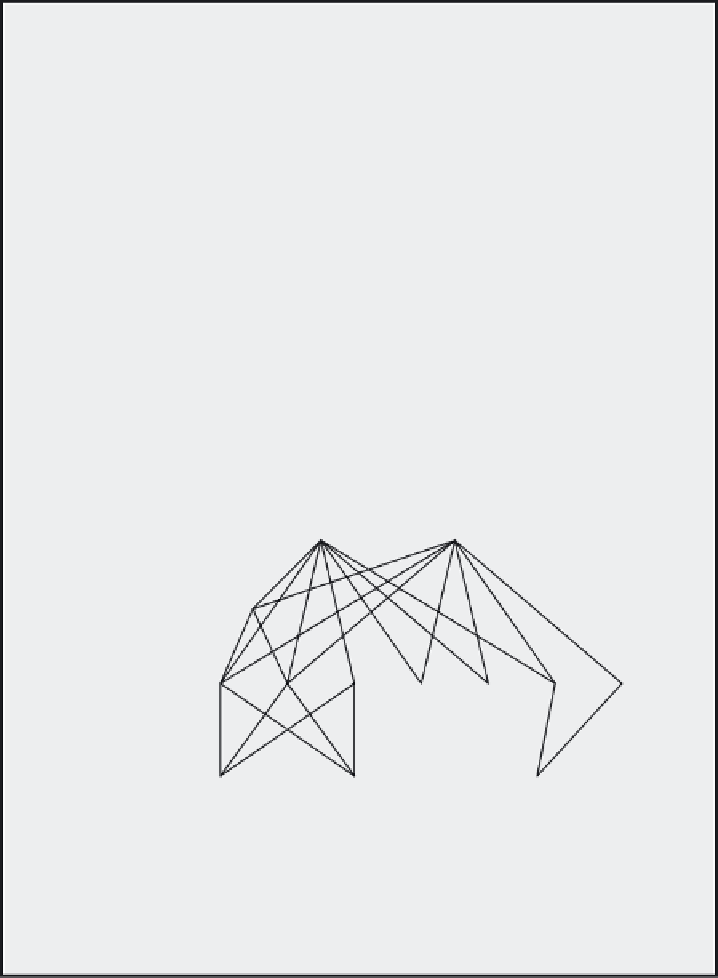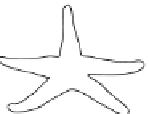Environmental Engineering Reference
In-Depth Information
visioning service
(coral cr ushed to create road surface) can result in the loss of a
regulating service
.
Each ecosystem service has a value that can be set against the economic returns
of activities that put them in jeopardy. Thus, in purely economic terms, there are
credible grounds for protecting nature. However, it is not straightforward to recog-
nize ecosystem decline or to know that, by some management action, ecosystem
health has been regained. For this reason, managers need indicators of ecosystem
health that provide a short cut to identifying ecosystems in trouble (Sections
9.8.2-9.8.5).
Box 9.1
Food webs and
pathways of energy and
nutrients
Direct and indirect effects in food webs
A predator feeding on a prey species has its most obvious (and direct) impact on the prey popula-
tion. A similarly straightforward effect in the case of interspecifi c competition is for one competitor
species to negatively impact another that feeds on the same limited resource. However, the infl u-
ence of a species often spreads much further than this, producing a series of indirect effects
throughout the community food web. Thus, for example, the effects of a carnivore on its herbivore
prey may also be felt by any plant population fed upon by the herbivore, by other predators and
parasites of the herbivore, and by other herbivores with which our species competes. The descrip-
tion of food webs is a painstaking affair, involving a detailed taxonomic inventory and analysis of
who feeds on whom. But a huge amount of information is then boiled down into a simple fl ow
diagram such as the one in Figure 9.1. The food web is often a starting point for understanding the
consequences of species loss (e.g. removing predators to assist an endangered species) or species
gain (e.g. reintroducing a desirable species or assessing the risk posed by the invasion of an
undesirable one).
Strong interactors and keystone species
Certain species are more tightly woven into the fabric of the food web than others. A species whose
removal would produce a large change in density (or extinction) of at least one other species may
be described as a
strong interactor
. Some strong interactors, if they were to be removed, would
lead to marked changes spreading throughout the food web
-
these
keystone species
have an
impact that is disproportionately large relative to their abundance (Power et al., 1996). The fi rst
use of the term keystone species was for the starfi sh
Pisaster ochraceus
(Paine, 1966, and see
12
13
11
4
5
6
7
8
9
10
1
2
3
Fig. 9.1
Food web for a rocky shore in Washington State, USA. Species higher in the web
feed on species lower down, as indicated by the lines. 1, fi ne particulate organic detritus in
the water column; 2, free-living microscopic planktonic plants; 3, algae growing on the
rocks; 4, acorn barnacles; 5, the mussel
Mytilus edulis
; 6, the goose barnacle
Pollicipes
sp.; 7,
chitons; 8, limpets; 9, the topshell
Teg ula
sp.; 10, the periwinkle
Littorina
sp.; 11, the snail
Thais
sp.; 12, the starfi sh
Pisaster ochraceus
; 13, the starfi sh
Leptasterias
sp. (After Briand,
1983.)










































Search WWH ::

Custom Search